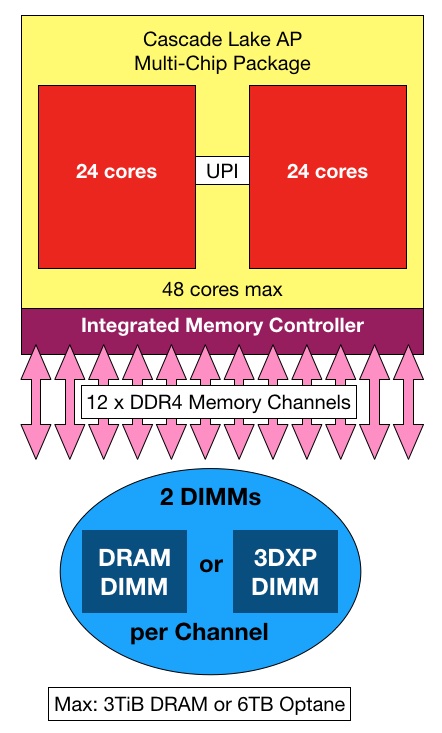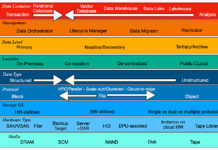Intel’s new Cascade Lake AP processor supports Optane memory but the company is not revealing details about endurance. This raises doubts about its real world use.
The AP (Advanced Processor) version of Intel’s Cascade Lake CPU adds Optane support to the x86 lineup. One reason for having direct support in the processor is that a server with both DRAM and Optane has two tiers of memory: fast DRAM memory and slower Optane memory; more formally Optane persistent memory.
DDR4 DRAM latency is in the 14ns area while Optane DC Persistent Memory averages 350ns for reads. This is the classic NUMA (non-universal memory access) issue seen in multi-processor servers with near and far memory having different response times but present inside a single processor server with two types of memory.
Cascade Lake AP differs from the SP (Standard Procecessor) version by having an integrated memory controller which supports running both DRAM and Optane memory in the same memory structure.

A Cascade Lake AP has 12 memory channels, each capable of supporting two DDR4 DIMMs. These can be DRAM DIMMs, Optane DIMMs or one of each.
Optane DIMMS come in 128GB, 256GB or 512GB capacity points. There can be a maximum of up to 3TiB of DRAM or 6TiB of Optane in a Cascade Lake AP system, or, more likely, a mix of DRAM and Optane with the DRAM acting as a cache.
Cascade Lake AP servers can be 2-socket systems, in which case they will support up to 12TiB of Optane memory.
An Optane SSD has over-provisioning (extra cells) to prolong its endurance (active life). With this the 750GB P4800X has a 5-year warranty and a listed 41PB written endurance rating. This is equivalent to 30DWPD (drive writes per day.) That has gone up from the initial 20DWPD number.
Intel has not revealed the endurance of its Optane DIMMs. If they are used in direct access memory mode; treated as memory by applications in other words and not as storage we can reasonably expect a large amount of writes to take place.
We are all waiting for Intel to release its Optane DC Persistent Memory endurance numbers and then we can get a good idea of real world performance. Hopefully they will be good.







